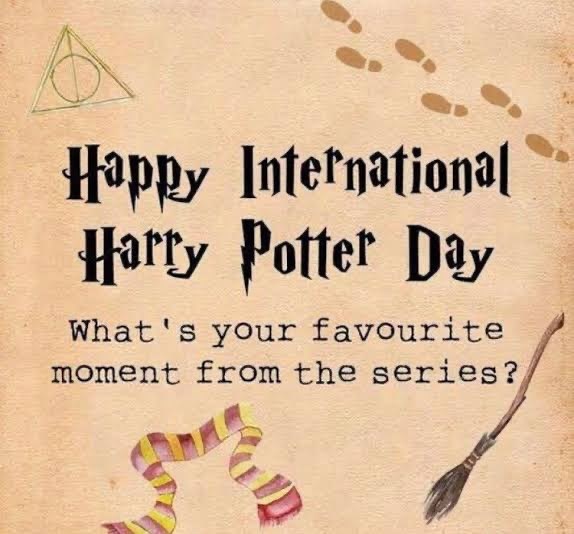Three-and-a-half stars. New Harry Potter entry tries to cram too many details into too short a film.
I've wondered, as the Harry Potter movie series approached the first of J.K. Rowling's massive "super books," how the filmmakers would successfully retain all the necessary details and exposition found in "Harry Potter and the Goblet of Fire."
Sadly, they didn't.
All four films - including this new one - have run approximately 2 1/2 hours. That was fine for "Harry Potter and the Sorceror's Stone" and "Harry Potter and the Chamber of Secrets," both of which unspooled like cinematic blueprints of their respective books (309 and 341 pages). Things felt a bit rushed in the film adaptation of "Harry Potter and the Prisoner of Azkaban," when screenwriter Steve Kloves - who has worked on all these films - had no choice but to leave some things behind while adapting this 435-page novel. Even so, his script retained all the essential elements and did respectable justice to the building complexity and ever-expanding population of Rowling's magic-oriented universe.
But "Goblet of Fire" clocks in at 734 pages, and the film will be virtually impenetrable to patrons who haven't first read the book. This one required two films or a miniseries; a single 157-minute movie simply doesn't suffice. It's not just a function of the dozens of new characters introduced, not one of whom is granted the backstory necessary to properly place him or her in this saga; director Mike Newell and Kloves have abandoned many of the familiar elements that have populated these films until now.
Thus, Harry's aunt, uncle and cousin - the ever-annoying Dursleys - are nowhere to be seen. The capriciously moving stairways at Hogwarts are similarly absent without leave, as are all the gloomy corridors, chatty paintings and wandering ghosts ... except Moaning Myrtle, whose presence is a necessary plot point. The friendly (and not so friendly) rivalry between the four Hogwarts houses - Gryffindor, Hufflepuff, Ravenclaw and Slytherin - is nowhere in evidence, and sulky, bullying Draco Malfoy has been reduced to a brief cameo.
Not that Harry doesn't have plenty to do; indeed, his plate is so full that it seems unlikely he'd ever find time for his studies ... which may explain why we almost never see any of these students in class, aside from the one time everybody is introduced to the school's new master of the dark arts, Alastor "Mad Eye" Moody (Brendan Gleeson, in a wonderfully flamboyant performance). Our forever beleaguered young hero is far too busy trying to stay alive.
And this, happily, is where the Harry Potter film series continues to excel. Production designer Stuart Craig once again delivers an awesomely fascinating universe, where casual little details are rendered with just as much authenticity as massive set-pieces, such as a vertigo-inducing sports stadium and the most malevolent - and huge - hedge maze ever put on camera.
On the other hand, much as I admire soundtrack musician Patrick Doyle ("Bridget Jones's Diary," "Gosford Park"), his genteel style is a pale, unsatisfying shadow of the rousing fanfares and mysterious themes John Williams composed for the first three films. I've no idea why Williams was passed over this time, but his absence is felt.
The saga's many players add some essential strokes to their characters, all of them quite comfortably inhabiting their respective roles. Alan Rickman supplies a few more key details to his handling of the mysteriously unpleasant Severus Snape, Gary Oldman makes a brief but quite important reappearance as Sirius Black, and Timothy Spall's malignantly toadish Wormtail cements his position as official henchman to He Who Must Not Be Named, Lord Voldemort.
This dark-arts villain finally makes his own corporeal appearance, in the shiver-inducing form of an all but unrecognized Ralph Fiennes, who brings genuine, terrifying madness to the role.
Much has been made about the fact that Harry (Daniel Radcliffe), Hermione (Emma Watson) and Ron (Rupert Grint) have reached that point in their lives when boys and girls begin to notice each other, and indeed Watson is given a moment to shed her tomboyish clothes for a gorgeous gown at the Hogwarts Yule Ball, which reveals the degree to which this now 15-year-old young woman has matured, since the film series began in 2001.
But here, too, in the area of awakening young love, this film all but ignores essential details. Those who've surmised that Harry may not wind up romantically linked with Hermione will not be surprised by the debut of young Cho (Katie Leung), a Hogwarts student who catches Potter's eye ... but their brief encounter here suggests an ongoing depth of feeling on Harry's part, which remains frustratingly unexplained and unresolved.
On the other hand, Newell deftly sketches a hilariously bathtub encounter between Harry and the ghostly Myrtle - who seems to have a serious crush that even her death hasn't blunted - which is quite funny and even borderline kinky.
Grint, ironically, is maturing much more rapidly than Radcliffe; it almost seems as if Ron must have spent the summer at the local gym. But that's actually in keeping with the evolving story, since Harry always has been portrayed as somewhat undersized.
This film's primary plotline, after a prologue involving the Quidditch World Cup and the unexpected appearance of some malignant Death Eaters, concerns Hogwarts' hosting of the Tri-Wizard Tournament, a perilous test of magical prowess involving the best students from three schools: Hogwarts and two rival European institutions, the all-girl Beauxbatons Academy of Magic, led by the majestic Madame Olympe Maxime (Frances de la Tour), and the all-boy Durmstrang Institute, headed by the ferocious Igor Karkaroff (Predrag Bjelac).
After some prestidigitation involving the blue-flamed Goblet of Fire, one champion is selected from each school: the winsome Fleur Delacour (Clmence Posy), from Beauxbatons; the massive and stoic Victor Krum (Stanislav Ianevski), from Durmstrang; and ... Cedric Diggory (Robert Pattinson), from Hogwarts.
Harry isn't old enough to meet the 17-year age requirement, imposed due to the very deadly nature of the Tri-Wizard Tourny. But somehow Harry's name is called anyway, and the subsequent challenge involves four competitors, rather than just three. Many at Hogwarts, finally tired of Harry's (apparent) grandstanding ways, shun the boy wizard as a show-off ... but it seems quite unreasonable when an uncharacteristically petulant Ron also turns on his former best friend.
What follows involves plenty of peril, behind-the-scenes machinations and the best dragon (a ferocious Hungarian Horntail, to be precise) ever put on the big screen. Much is not as it seems - an ongoing problem, in a realm where a slurp of polyjuice potion can transform the user into anybody else - and the story builds to an appropriately exciting climax ... and, for the first time, leaves us with something of a cliff-hanging conclusion.
I've no doubt Rowling's fans will adore this film, just as they've embraced all the others; indeed, the palpable excitement during Saturday's preview screening was a joy to behold. You don't often see an entire theater burst into applause when a film starts.
But these faithful will embrace this latest cinematic installment because they already know what's coming, and because - consciously or un - they can fill in all the blanks. Countless times during "Goblet of Fire," we can't help noticing that this is a Readers Digest condensed version of what should be a much longer film.
While I don't doubt that a huge majority of the audience already has read the book, movies must, by their nature, be able to stand on their own ... and this one does not.
We therefore must hope for a four-hour director's cut, when the DVD arrives.
Rated PG-13, and perhaps too harshly, for dramatic intensity.




















37